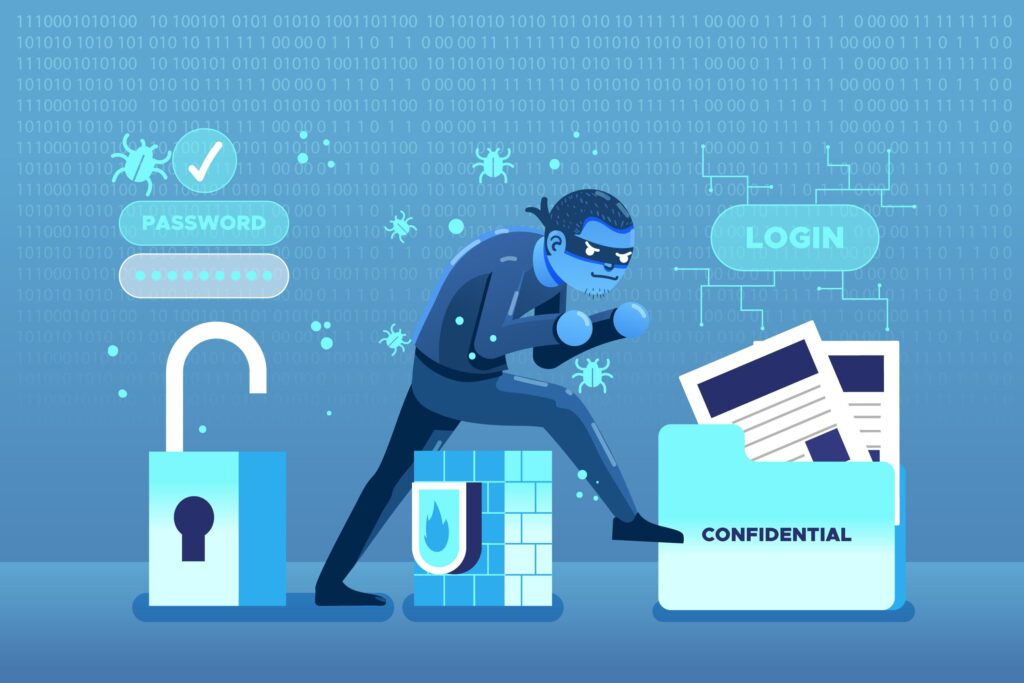In the realm of cybersecurity, where the battle between defenders and attackers rages on, the concept of a “backdoor threat” looms as one of the most insidious and potentially devastating forms of intrusion. In this article, we’ll delve into the depths of the backdoor threat, exploring what it is, how it operates, its various forms, and the strategies needed to guard against this persistent digital menace.

Defining the Backdoor Threat:
At its core, a backdoor threat is a clandestine method used by malicious actors to gain unauthorized access to a computer system, network, or software application. The term “backdoor” alludes to a hidden or covert entry point that allows attackers to bypass traditional security mechanisms and gain unrestricted access to a targeted system or network.
Think of a backdoor as a secret passage in a fortress—a concealed entrance that circumvents the main gates and defenses, granting unauthorized entry to those who know its existence.
How Backdoor Threats Operate:
Backdoor threats operate in various ways, often utilizing sneaky and covert techniques to avoid detection. Here’s a simplified breakdown of how a backdoor threat typically works:
-
Creation or Discovery: Attackers either create a backdoor within a system or discover an existing vulnerability that can be exploited as a backdoor.
-
Unauthorized Access: Using the backdoor, attackers gain unauthorized access to the system, network, or application.
-
Stealthy Control: Once inside, attackers have control over the compromised system. They can manipulate, exfiltrate data, or launch further attacks without raising suspicions.
-
Persistent Presence: Backdoors are often designed to maintain persistence, ensuring that even if the initial breach is discovered and remediated, attackers can regain access in the future.
-
Data Exfiltration or Manipulation: Attackers can steal sensitive data, modify system configurations, or use the compromised system as a launching pad for other malicious activities.
-
Covering Tracks: To avoid detection, attackers cover their tracks, erasing logs and traces of their activities.
Common Forms of Backdoor Threats:
Backdoor threats come in various forms, tailored to the attacker’s objectives and the targeted systems:
-
Hardware Backdoors: These are physical modifications or implants on computer hardware or devices, allowing unauthorized access to the system.
-
Software Backdoors: These are malicious code or vulnerabilities within software applications or operating systems that grant access to attackers.
-
Remote Access Trojans (RATs): RATs are malicious programs that provide remote control over a compromised system. Attackers use them to access, manipulate, or steal data.
-
Webshell Backdoors: Webshell scripts are hidden within web servers, allowing attackers to execute commands on the server remotely.
-
Crypto Backdoors: These involve tampering with encryption mechanisms to create vulnerabilities that only the attacker can exploit.
-
Authentication Bypass Backdoors: These backdoors allow attackers to bypass login or authentication mechanisms and gain unauthorized access to systems.
Implications of Backdoor Threats:
Backdoor threats carry far-reaching implications, posing significant risks to individuals, organizations, and even national security:
-
Data Breaches: Attackers can steal sensitive data, such as personal information, financial records, or intellectual property, leading to data breaches and financial losses.
-
Privacy Violation: Backdoors can be used to monitor and spy on individuals or organizations, violating privacy rights.
-
Financial Losses: Organizations can suffer financial losses due to theft, extortion, or the costs associated with remediating a backdoor breach.
-
Reputation Damage: A backdoor breach can tarnish an organization’s reputation and erode trust among customers and partners.
-
National Security Risks: State-sponsored backdoor threats can compromise critical infrastructure, intelligence, and national security.
Preventing and Mitigating Backdoor Threats:
Preventing and mitigating backdoor threats require a multi-layered approach to cybersecurity:
-
Vulnerability Management: Regularly update and patch software, applications, and operating systems to address known vulnerabilities that could be exploited as backdoors.
-
Access Control: Implement robust access controls, including strong authentication mechanisms and the principle of least privilege (granting users only the minimum level of access required).
-
Network Segmentation: Segment networks to limit lateral movement and prevent attackers from easily traversing a network once inside.
-
Behavioral Analysis: Use behavioral analysis and anomaly detection to identify suspicious activities and potential backdoors.
-
Antivirus and Anti-malware: Employ reliable antivirus and anti-malware solutions to detect and remove malicious software that may create or exploit backdoors.
-
Threat Intelligence: Stay informed about emerging threats and vulnerabilities by monitoring threat intelligence sources and collaborating with the cybersecurity community.
-
Regular Audits and Penetration Testing: Conduct regular security audits and penetration testing to identify and remediate vulnerabilities and backdoors.
-
Incident Response Plan: Develop and maintain an incident response plan to quickly detect, respond to, and recover from backdoor breaches.
-
Encryption: Use strong encryption to protect data at rest and in transit, making it more difficult for attackers to gain meaningful access.
Conclusion:
The backdoor threat remains a persistent and evolving menace in the digital realm. Whether motivated by financial gain, espionage, or other malicious purposes, attackers continually seek covert entry points to gain unauthorized access to systems and networks. In this ever-escalating battle for digital security, vigilance, proactive measures, and an unwavering commitment to cybersecurity are essential defenses against the insidious nature of backdoor threats.